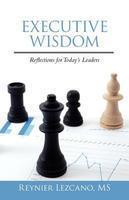The good times. The bad times. The changin’ times.
It’s no surprise the late Steve Jobs’ favorite music was written and performed by Bob Dylan and The Beatles. I just finished his biography and it was as compelling a book as Atlas Shrugged.
Anyway, about three months ago I started a column about the 1964 Bob Dylan song, “The times they are a-changin.’” An anthem for those, times and these times. Bob Dylan can write his soul – and touch yours. The times are changing. But for one reason or another I set the column aside.
As I was reading the Walter Isaacson Steve Jobs biography (a book I could NOT put down), I got goosebumps when Jobs got fired from Apple after a decade of it being his creation and child. Devastated, he went home and played the second verse of “The times they are a-changin’” over and over:
Come writers and critics
Who prophesize with your pen
And keep your eyes wide
The chance won’tcome again
And don’t speak too soon
For the wheel’s still in spin
And there’s no tellin’ who
That it’s namin’
For the loser now
Will be later to win
For the times they are a-changin’.
I just sat there stunned. The song, one of Jobs’favorites, actually predicted his return, and arguably one of the greatest business comebacks of all time. And the timing of my column. Further proof (as if you needed it) there are no coincidences.
The most chilling of these non-coincidences is that my set aside writing already contained Apple examples of how the world is changed.
So – here are my original thoughts and the added thoughts since I read the Jobs book:
When Dylan wrote about changing times in 1964, it was about societal change. The politics, civil rights, rebellion of kids, music, and a new generation of thought and expression.
The same holds true today, almost fifty years later. It’s brings to mind the French novelist Alphonse Karr’s quote, “The more things change, the more they remain the same.”
EXAMPLE: The t-shirt has been the same since the ’50s. What keeps it popular is the design printed on the front and back. Millions of shirts are sold each year because someone wants the design printed on it.
The picture I want to present to you is the BIG PICTURE of change. Not yoursales plan, or your quota, or your boss, or your comp plan – what I’m offering are life changes that go way beyond sales and race for dollars.
It’s about how technology and your ability to see what is now will affect what is next. Jobs was able to see it and do it because it was his life’s work. But you must intensify your focus (the same way I’m intensifying mine) to see what is next for your industry, your market, and your customers – so there will be a positive impact for your company, your family, and yourself.
The Internet, the smart phone, the tablet, and soon internet TV will become a vital part of our society and world commerce. AKA: sales. Advances over the next decade will dwarf what is available now, and will change markets forever.
The same way trading of shares of stock and insurance policies were turned upside down with the Internet, the same way the iPod changed the way music is played, distributed, and sold, the same way Amazon and eBay became the world’s department store – so will your market evolve. And it will go to the most prepared to understand, create, capitalize, and master the evolution and the quality of products.
A FEW EXAMPLES OF WHAT WAS AND WHAT’S NEXT:
- The schoolbook is being replaced by the iPad. (Microsoft Word still tells me that iPad is misspelled.)
- The hardbound book is being taken over by an e-book.
- The smartphone is smarter than you are – and Siri talks to you. Blackberry owned the market, and sat on it – and lost it. Apple has 500,000 apps. Blackberry has about 10% of that number. Angry Birds is finally among them.
- The television is flat and cheap. It will soon become your home Internet connection. Someone will own that market. I’m betting Apple. You?
- Got fax machine? Make me laugh! Or should I say, “LOL” or should I say, “PDF.”
- Use the Yellow Pages or Google? Bing helps you decide – I decided to use Google.
- Will cars run on gasoline in ten years?
And with all of that, technology lifecycles are shorter. How have you taken advantage ofthis? And for those of you saying, “I know that.” Ask yourself, “How good am I at that?” and “What am I doing to master that?”
FACT: THE times are changing.
UNKNOWN FACT: How are YOUR times changing?
Reprinted with permission from Jeffrey H. Gitomer and Buy Gitomer.
About the Author


 Projects, like other business activities, involve meetings and approvals. The difference between project and routine business meetings is that a project is not an ongoing concern; therefore, its meetings tend to be periodic, sporadic, or driven by one-time needs rather than recurring with some regular frequency. Consequently, these off-routine meetings and approval review sessions are a disruption to non-project team executives, managers, and contributors; representing something these individuals naturally resist so to protect the time for their normally scheduled duties.
Projects, like other business activities, involve meetings and approvals. The difference between project and routine business meetings is that a project is not an ongoing concern; therefore, its meetings tend to be periodic, sporadic, or driven by one-time needs rather than recurring with some regular frequency. Consequently, these off-routine meetings and approval review sessions are a disruption to non-project team executives, managers, and contributors; representing something these individuals naturally resist so to protect the time for their normally scheduled duties. “The way to get things done is not to mind who gets the credit of doing them.”
“The way to get things done is not to mind who gets the credit of doing them.”